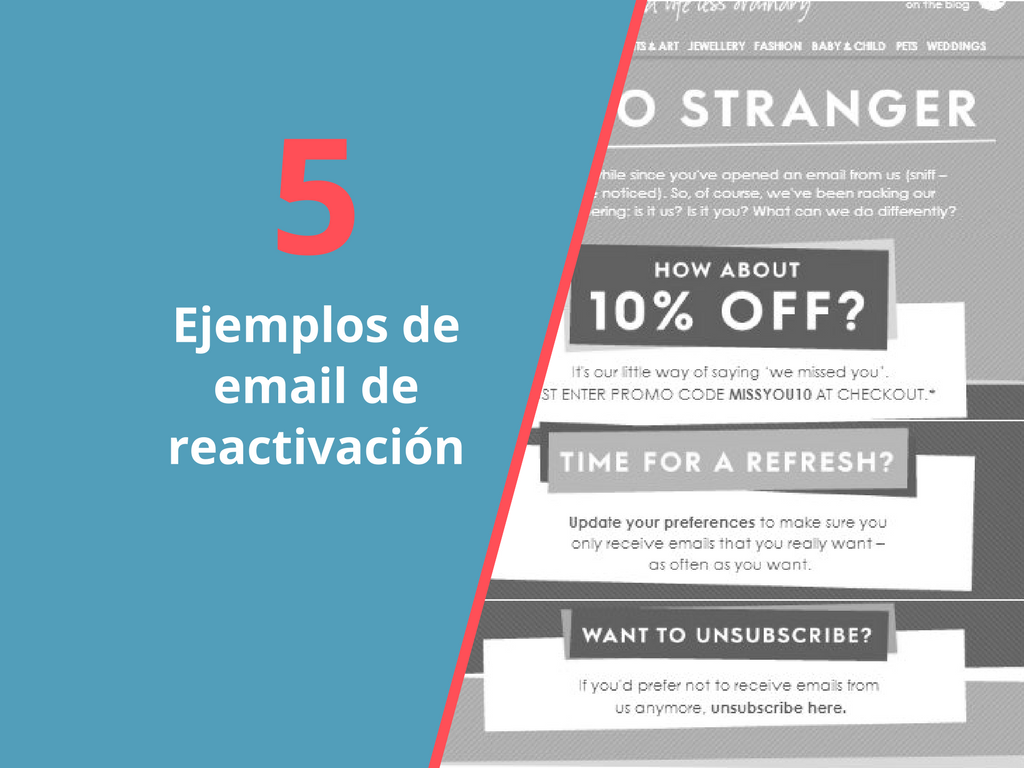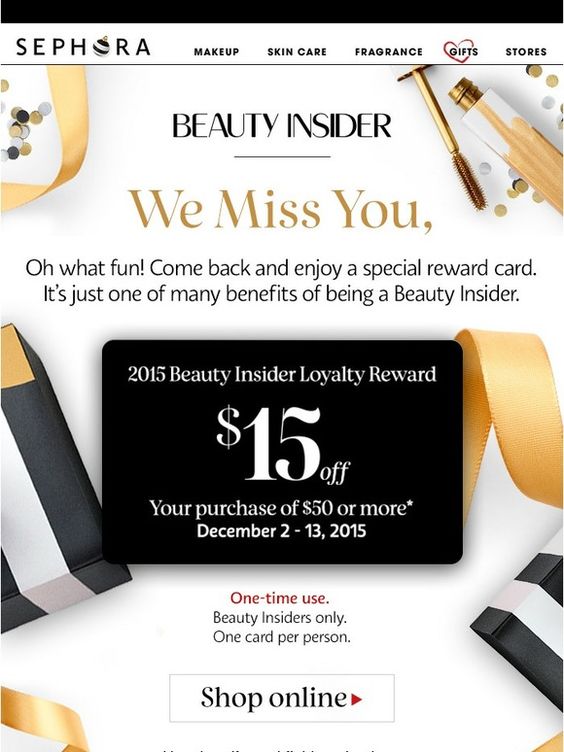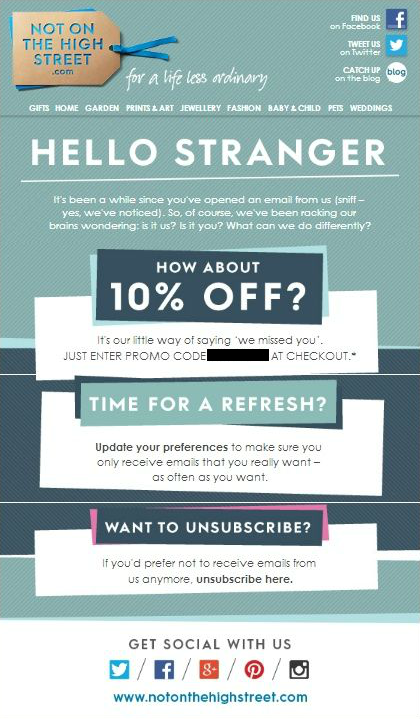5 good examples of reactivation emails

In any database there are those users who are inactive and who do not have any kind of link or relationship with the brand, either because it has never existed or because what we offer is not of interest to them. In this post we will see 5 types of reactivation emails that, as the name suggests, can help to reactivate this type of users.
As mentioned above, in the User Life Cycle we find those users who add almost no value to the brandnot only because they do not generate any conversions, but also because of their low level of interaction. This group of subscribers is part of the so-called reactivation phase. In this case, we will have to determine whether or not it is really worth investing in them. Therefore, our mission is to select these subscribers and carry out specific actions to encourage their interest and get them to become active users. If the actions are successful and we succeed, we will place these users in the recruitment or conversion phase. On the contrary, if we see that they continue to fail to respond to the reactivation actions, the we will exclude from our database and we will not send you any more emails.
Next we will see what kind of reactivation emails can be used in a user reactivation strategy:
1- Re-activation email with an incentive
This is the most common type of reactivation email. It is characterised by provide the user with a unique incentive to take action and thus convert them into active users. Among the most commonly used incentives are discounts, free shipping costs or gifts when making a purchase. This email from Sephora is a good example. We can see how it first captures the subscriber's attention by saying "We miss you" and then offers them a discount of 15$ if they make a purchase. In this case, and it happens very often, the discount is only valid on purchases over 50$ and for a limited period of time.

2- Creative reactivation email
There are other companies that are committed to making a creative and original reactivation email with the aim of arousing some kind of emotion or feeling in the subscriber. and thus ensure that the email does not go unnoticed. This would be the case of the company Missguided which uses the storytelling technique and explains the story of the brand's relationship with the customer. Apart from standing out for its originality, it also offers the user an attractive incentive to make the story end with a happy ending for both.

3- Re-activation email to confirm subscription
This type of reactivation email is characterised by the following characteristics very direct and for communicating to the subscriber in no uncertain terms what the real reason is for receiving this email. In one way or another they are asked to confirm if you want to continue receiving emails from the brand. Here are two good examples. In the reactivation email from Rue La La the user is told to confirm that he/she "DOES" want to receive communications from the brand, otherwise, if he/she does not confirm, this will be the last email. On the other hand, in the Free PeopleIn the email, two buttons are included for both options: confirm the subscription or unsubscribe. The difference lies in the fact that Rue La La hides a little more the "more negative" option for the brand (unsubscribe), visually giving more importance to the option to continue with them; on the other hand, the Free People email is more direct and gives equal importance to both options.


4- Reactivation email to showcase the best of the brand
The brand Boden has implemented a reactivation email which aims to demonstrate all the qualities of the brand to the subscriber and everything she misses out on by not opening her emails. To do this, as we can see, she uses a gif where she shows her characteristic style and different looks. Finally, she implements a Call to Action for the user to visit the latest news on her website.

5- Multi-option reactivation email
The reactivation email from Not on the high street is a good mix of some of the above. Without a doubt, it is a very comprehensive email thanks to the wide range of options it offers to the inactive subscriber. The first option is the opportunity to have a 10% off your next orderTherefore, we would be talking about the strategy we have seen in the first type of reactivation email. Secondly - and very interestingly - you are offered the opportunity to be able to change their preferences to receive emails more in line with your interests. And finally, if you are not convinced by the previous two options, you are offered the possibility of unsubscribe and stop receiving emails of the brand.

What do you think is the most interesting type of reactivation email? Or in other words, what type of reactivation email would you implement or have implemented in your company?